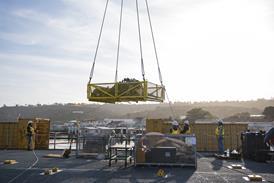Mark Hannant
The lid came off the world's first optically powered aircraft fuel quantity control indicating system at the show yesterday.
By eliminating all electrical connections between an aircraft fuel tank and its avionics and power busses, the application, developed by Raytheon and Smiths Industries, will improve reliability. By replacing the traditional twisted copper wiring with an all-optical sensor package, airline manufacturers can eliminate the danger of system malfunction due to corrosion, electromagnetic interference or lightning.
Fibre optic technology is seen as the key to improved aircraft safety in the next century. The National Transportation Safety Board US states its view that: 'fibre optic technology provides the basis for the intrinsically safe, reliable and cost effective systems we need as air travel grows in the 21st century'.
Power
A deal between Raytheon Control-By-Light and Smith Industries brings together Raytheon's optical power supply (around 10W), and the relevant software, and marries it with Smiths Industries fibre optic distributed sensing and networking systems.
Brian Morrison, director of Raytheon Control-By-Light is enthusiastic about the future of fibre-optic technology for the aviation industry. He says: "Fibre-optics and distributed remote sensor networks are being used wherever there is a need to collect and communicate critical information and to automate functions and controls."
Raytheon also announced yesterday that it has installed and delivered the first distributed flight data acquisition unit (DFDAU) on a Beech 1900D 19-passenger regional airliner.
The DFDAU system uses distributed processing to translate data from over 160 sources around the Beech 1900D. By using a single fibre-optic cable to share information the system will cut down significantly on the amount of wiring cluttering the aircraft.
Source: Flight Daily News























